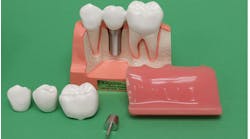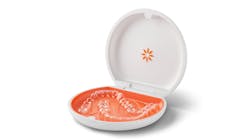The dental staffing crisis is real and is not going away anytime soon. This is not intended as a statement of gloom and doom, but one based on research and analysis. Partially due to this shortage of labor, overhead costs in dental practices have risen about 10% since the beginning of the pandemic. This labor shortage will continue to drive these costs even higher.
Related reading:
- The 2024 Dental Salary Report
- The dental staffing shortage: Updates, insights, and strategies for getting through it
- How far should you go when compensating your dental team?
As an example, in last January’s Dental Economics/Levin Group Annual Practice Survey, we found that about 10% of dental hygienists have left the profession. It will take time to replace them, as well as the many other staff positions that have been affected over that same period. Although no one can project what the average hygienist compensation will be in the future, the current increase in labor costs will significantly hurt doctor income unless practice production can be increased to compensate.
The economics of dental staffing
An increase in dental staffing costs has a negative financial impact on dental practices. Traditionally it has been recommended that the annual expense for dental staff in general practices be in the range of 25%–27%. Many practices were above that range even before the recent shortage began.
Here's a simple example. If a practice had 30% of its costs dedicated to staffing, then a 10% increase in staffing costs would increase total practice overhead by approximately 3%. That 3% increase goes right against the bottom line. Combine that with inflation, increasing practice nonstaffing costs by a little over 6%, and the total impact on practice overhead averages around 9%. This means that practices are now losing an additional $9,000 for every $100,000 of production. A $1 million practice would now be spending an additional $90,000 per year due to staffing costs and the effects of inflation.
In an era where the average retirement age of dentists is close to 68 and Levin Group predicts it will reach 72 in the next five years, the lower income caused by higher overhead will have a direct impact on when dentists reach financial independence or can retire.1 As I said at the start, this is not meant to be doom and gloom. But practices need to recognize that staff compensation decisions made today have a direct effect now and in the future.
Aligning compensation with practice performance
The most desirable method of obtaining a source of funds to pay higher compensation is to increase practice production.
Every job has an average compensation specific to geography, and these averages are getting higher and higher.
Using hygiene as an example, if you were paying a dental hygienist $60,000 per year and you're now paying $80,000, that $20,000 must come from somewhere (hopefully not out of the doctor’s income). You may need to change your mindset about compensation and its relationship to practice production in order to achieve this. Potential solutions to overcome some of the major dental staff and compensation challenges include:
Introduce performance bonuses. Take advantage of your team’s interest in earning higher income to focus their attention on achieving higher total practice production. The two objectives should be aligned. Bonuses should be based on financial performance because you are working to offset increases in practice overhead with higher production. The “classic” performance bonus is a total team bonus based on practice production growth. Another, more specific to the hygienists in our example, can be tied to the level of production based on offering ancillary services such as fluoride, identifying potential treatment, treating periodontal disease, and other options. Bonuses built around increasing the number of new patients, improving case acceptance, decreasing no-shows, more efficient scheduling, building a schedule to hit the daily production goal, etc., all go to the heart of improving production to offset higher costs. Increasing production is still the single best strategy to offset increases in staffing costs and practice overhead.
Implement retention bonuses. Recruiting, hiring, and onboarding new team members can be extremely expensive. One way to avoid that expense is to retain your current team members. Retention bonuses go a long way to increasing staff longevity. Team members who stay with you for one, three, five, 10, 15, and 20 years would receive incrementally increasing amounts on those anniversary dates. These payments have an extremely positive effect on staff retention. These bonuses need to be large enough to create the right motivation, not simply a small amount to say thank you. Think of longevity bonuses as part of your compensation program. Your staff will value this approach and view their personal success as interrelated with the practice’s.
Placing compensation incentives at strategic points along a team member’s career path helps everyone see the benefits of mutual loyalty.
Create a culture of positivity. Although the concept often feels vague, the right culture is a major factor in staff members’ propensity to stay. People love working in a positive culture where they enjoy their work, are friendly with their coworkers, and feel that they are appreciated.
An environment that values team members and their contributions will achieve better results on tangible and intangible factors.
Analyze dental staff compensation in your area. This can be as simple as going online and reviewing the compensation offered in active job postings. You can also ask colleagues in study clubs or friends who are dentists to share the level that they are compensating their staff. Finally, if you are interviewing, you will hear certain expectations from potential staff members for their compensation packages. Some of these demands may be unreasonable, but many are simply based on the candidate having done their own research on the compensation levels in your area. Be careful not to go too far above the higher compensation offers, as over time this can place a financial strain on the practice. Keep in mind that compensation is more than just salary. Taxes and benefits can be as much as 30%–35% of an employee package.
Data provides everyone with a “reality framework” for productive conversations about compensation and expectations.
Set compensation guidelines for each position. Guidelines should be established for each staff position, including a salary range. For example, your salary range for a dental assistant might be $37,000–$52,000. A new dental assistant without much training might come in at the lower end of the range. She would be able to see her compensation potential offered at the higher end of the range as she acquires new skills and experience. It is also important to evaluate the current staff and ensure that they are being compensated at the right levels within the ranges as well. We have seen practices that increase compensation to attract new staff members but leave current staff members at a lower compensation because they are already in the practice. This can lead to conflict or staff members leaving the practice to seek higher compensation.
Salary ranges are utilized by companies to manage situations where multiple employees with varying levels of experience hold the same position.
Sustainable compensation strategies
The staffing crisis will be with us for some time, causing an increase in staffing costs and compensation. Practices should avoid offering salaries that would eventually become difficult to sustain, resulting in financial strain. Dentistry has always had a “safety valve” where doctors simply take less income when financial challenges arise. However, as the average retirement age gets pushed further out, this becomes a more significant factor that must be addressed. Dental practices are not immune to the reality that no business will survive in the long term if its revenue is lower than its expenses. As team members expect to make more money, practice owners need to create an environment where everyone in the practice is accountable to help generate higher production.
The recommendations above are key to addressing staff compensation and will benefit any practice. There are many practices that compensate staff fairly and with great appreciation, and they are functioning at elevated levels of efficiency and productivity. Increasing practice production is the most straightforward strategy to offset higher staff compensation in this new era.
Editor's note: This article appeared in the January 2024 print edition of Dental Economics magazine. Dentists in North America are eligible for a complimentary print subscription. Sign up here.
Reference
- Dentist retirements increase. ADA Health Policy Institute. https://www.ada.org/-/media/project/ada-organization/ada/ada-org/files/resources/research/hpi/hpigraphic_dentist_retirements_increase.pdf
Roger P. Levin, DDS, CEO and founder of Levin Group, has worked with more than 30,000 practices to increase production. A recognized expert on dental practice management and marketing, he has written 67 books and more than 4,000 articles, and regularly presents seminars in the US and around the world. To contact Dr. Levin or to join the 40,000 dental professionals who receive his Practice Production Tip of the Day, visit levingroup.com or email [email protected].






